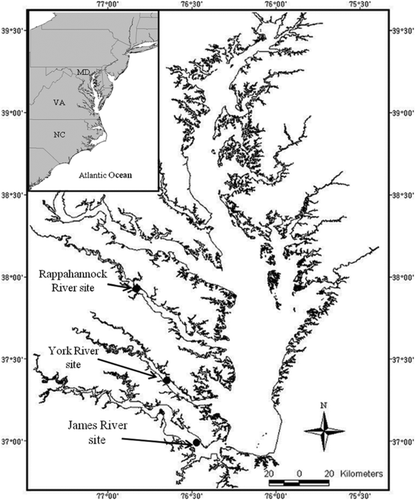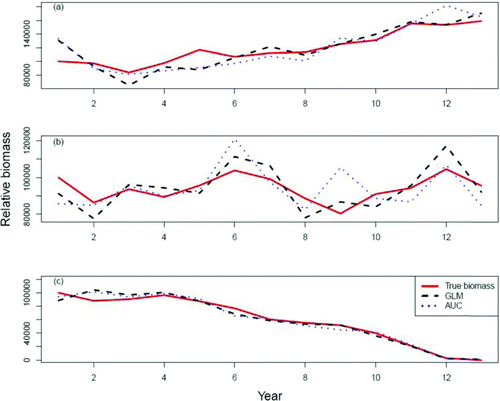Figures & data
FIGURE 1 Locations of staked gill-net American shad monitoring sites on the James, York, and Rappahannock rivers based on historical locations associated with commercial logbook daily catch data.

FIGURE 2 Annual indices of relative abundance and the associated coefficients of variation (CVs) for American shad collected from the (a) James, (b) York, and (c) Rappahannock rivers based on area-under-the-curve (AUC; blue lines) and generalized linear model approaches (GLM; black lines). All monitoring indices correspond to the years 1998–2011. The horizontal lines represent the logbook-based restoration index values, which are means from 1980–1992 for the James and Rappahannock rivers and 1953–1957 for the York River.

FIGURE 3 Proportional differences of the monitoring indices from 1998 to 2011 relative to the respective restoration reference index value for American shad in the (a) James, (b) York, and (c) Rappahannock rivers based on area-under-the-curve (AUC; blue lines) and generalized linear model approaches (GLM; black lines).

